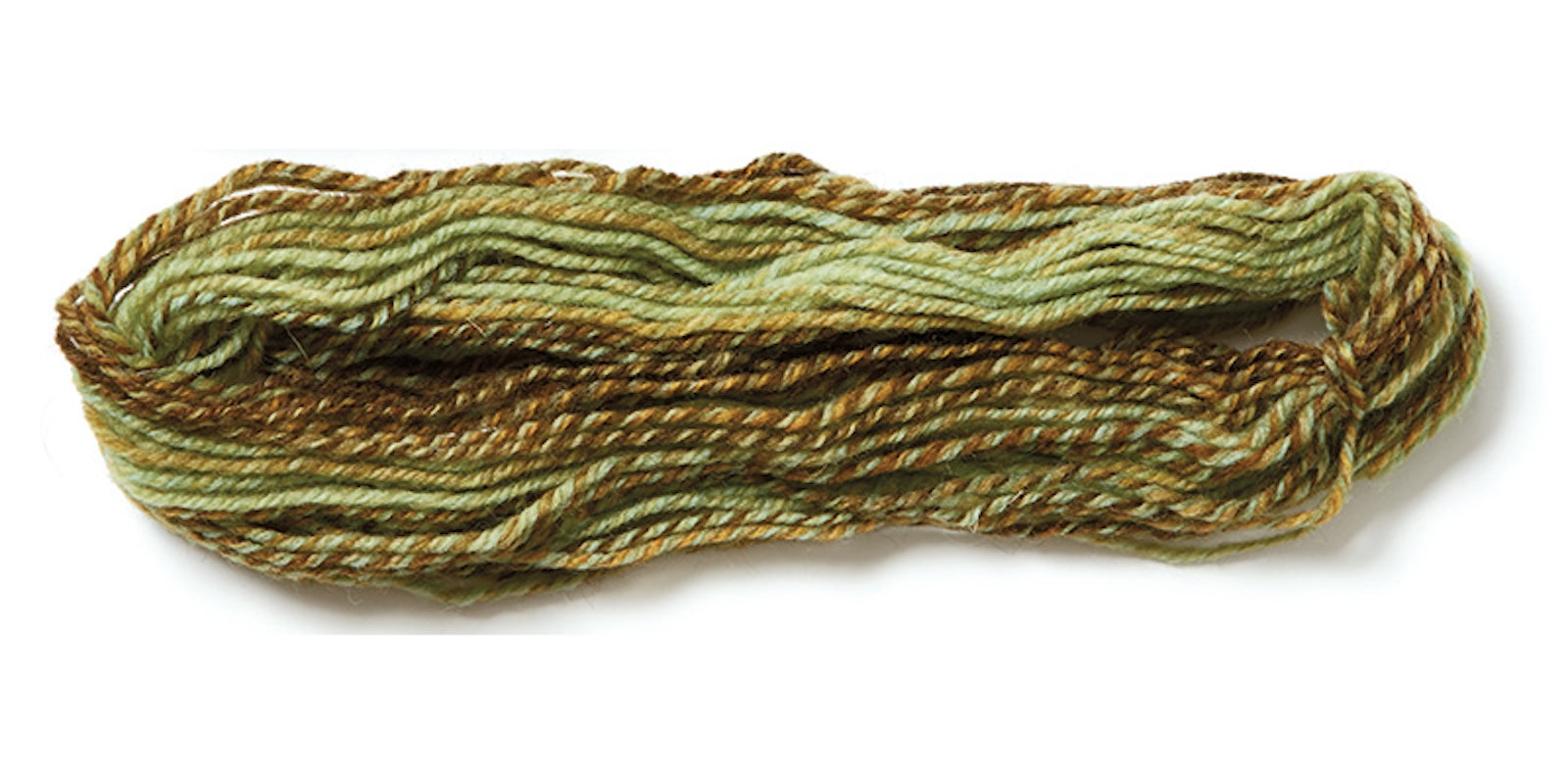1. Fine yarns don’t have to be made from fine fibers. Yes, the micron count (diameter) of a longwool may be higher than that of an extrafine Merino, but the structure of a coarser wool can help the holes in lace fabric stay open and crisp. 2. All drive bands are not created equal. If you thought all cotton string was the same or the stretchy drive band that came with your wheel was the only choice, prepare to have your eyes opened. Beth shows half a dozen different drive band materials and explains the benefits of each. (By the way, the same goes for brake brands--you don’t have to take what you’re given.) Beth explains why this one little length of cord can make such a huge difference in your ability to spin fine yarn. 3. You can spin fine yarns on any wheel. Sure, some wheels make it easier than others--double drive is generally the easiest, irish tension hardest--but a lace flyer kit isn’t absolutely necessary to make gossamer yarns. With a homemade fat-core bobbin, a little trick of lacing the flyer, and some adjustments to your tension, you can spin a thin yarn with any old wheel. 4. Fine yarns aren’t just for lace. Sure, they’re perfect--some might say essential--for lace, but fine yarns are necessary when you want to make a multi-ply yarn that’s thinner than a worsted weight. Unless you only like to wear chunky sweaters, and especially if you want to use your handspun year-round, learning to spin a fine yarn is an essential skill for any handspinner.
|




